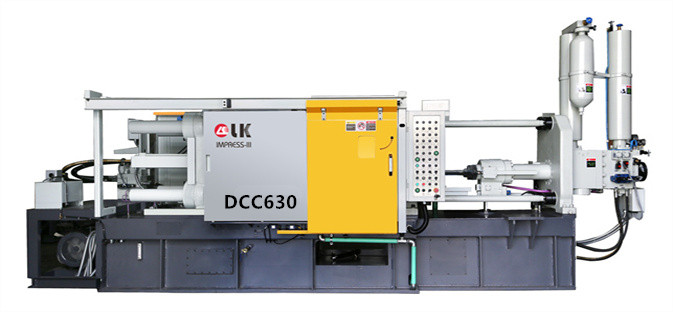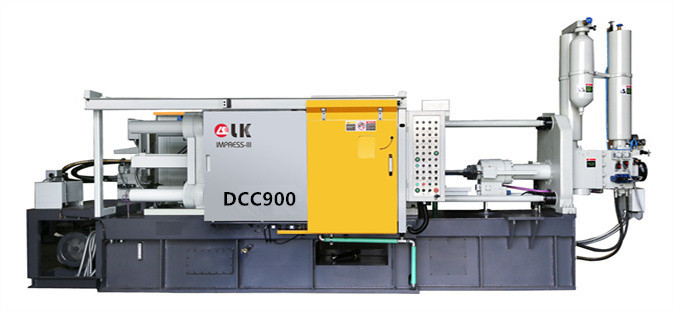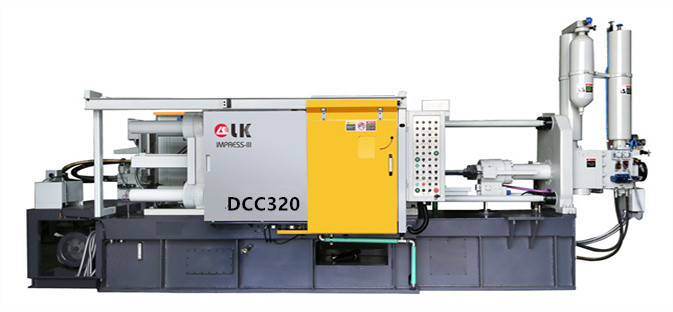Innovative Solutions to Improve the Surface Finish of Die Castings
LK Die Casting Machine / 2024-07-04 14:31:30
Introduction
Die castings are widely used in various industries, and the requirements for their surface finish are getting higher and higher. The surface finish not only
affects the appearance quality of the product but is also directly related to its mechanical properties and service life. This article will introduce innovative
solutions to improve the surface finish of die castings to help manufacturers optimize the process and improve product quality.

The importance of surface finish of die castings
The surface finish of die castings has an important impact on the appearance, performance, and service life of the product. A high-finish surface is not only
beautiful but also reduces friction, and improves corrosion resistance and wear resistance. At the same time, a smooth surface helps reduce dirt accumulation and
facilitates cleaning and maintenance.
Factors affecting the surface finish of die castings are as follows:
1. Material composition: Different materials have different fluidity and cooling rates, which affect the surface quality of the casting.
3. Mold design: The precision and surface finish of the mold directly affects the quality of the casting.
3. Process parameters: Process parameters such as injection speed, pressure, and temperature have a significant impact on the surface finish.
4. Post-processing process: Deburring, polishing surface treatment, and other subsequent processes are also important factors in determining surface quality.

Innovative solutions
1. Improve mold design and manufacturing
High-precision mold: Use high-precision processing equipment and advanced manufacturing processes to ensure a smooth surface and precise dimensions of the mold.
Optimize cooling system: Rationally design the cooling system of the mold to ensure uniform cooling of the casting and reduce surface defects.
Surface coating technology: Apply high-wear-resistant and low-friction coating materials such as titanium nitride (TiN) coating on the mold surface to improve mold
life and casting surface quality.
2. Optimize die-casting process parameters
a. Injection speed and pressure: According to the shape and size of the casting, adjust the injection speed and pressure to ensure that the metal liquid fills
the mold and reduces pores and cold shuts.
b. Mold temperature control: Keep the mold temperature uniform and stable to avoid surface defects caused by temperature fluctuations.
Use of release agent: Select an appropriate release agent and control its usage to avoid surface defects caused by release agent residues.
3. The Application of advanced materials and technologies
High-fluidity alloys: Select high-fluidity zinc alloy materials, such as Zamak 5, to improve the filling capacity of the molten metal and reduce surface defects.
Ultrasonic-assisted die casting: Use ultrasonic technology in the die casting process to improve the fluidity and filling effect of the molten metal and improve the surface finish.
Vacuum die casting: Apply vacuum technology in the die casting process to reduce the pores inside and on the surface of the casting and improve the surface quality.
4. Advanced post-processing technology
a. Mechanical polishing: Use efficient mechanical polishing equipment to finely polish the die castings to improve the surface finish.
b. Chemical polishing: Use chemical polishing technology to remove tiny defects on the surface of the casting through chemical reactions to obtain a smooth surface.
c. Electroplating and painting: Electroplating or spraying the castings to form a smooth, wear-resistant protective layer to improve surface quality and durability.
5. Intelligent manufacturing and quality control
Online detection: Introduce advanced online detection equipment and technology to monitor various parameters in the die-casting process in real time, adjust the
process in time, and ensure product quality.
Data analysis and optimization: Use big data and artificial intelligence technology to analyze the data in the production process, find out the key factors
affecting the surface finish, and optimizing the production process.
Automated production line: Use automated production lines to improve production efficiency, ensure the consistency and stability of the process, and improve the
overall quality of die castings.

Conclusion
Improving the surface finish of die castings requires starting from multiple aspects such as material selection, mold design, process parameter optimization, post-
processing technology, and intelligent manufacturing. By adopting innovative solutions, the surface quality of die castings can be significantly improved to meet
the market demand for high-quality products.
It is hoped that the innovative solutions provided in this article can help die-casting companies optimize production processes, improve product quality, and stand
out in the fiercely competitive market. With the continuous advancement of technology, the die-casting process will usher in a broader development prospect, and
high-quality die castings will also be used in more fields, contributing to the development of modern manufacturing.
Contact LK Egypt to learn more info about the die-casting machine
LKAGENT OFFICE DCM
Address: Industry Zone, South of Port Said Kebly, Egypt
https://www.zazdiecasting.com/
Phone: +86 13598704163
Mobile: +20 101 304 3317 +20 150 181 8310
Email: jack@zazmae.com ahmedmahmoud@zazmae.com
#die cast tooling
#trivalent chromate
#rapid prototype casting
#a360 aluminum
#aluminum caster
#aluminum prototype
#ideal 55 slider parts
#density of aluminum kg/mm3
#magnesium sheet metal
#parts of a metal gate
#subcontracting of screw machining for the luxury sector
#wall aluminum
#die casting tooling
#tooling for die casting
#density of aluminium in kg mm3
#clear chromate
#es casting metals
#gating material
#prototype aluminum
#sigma castings
#subcontracting of screw-machining for household appliances
#we squeeze to please machine
#aluminium gravity die casting
#aluminum part
#aluminum rapid prototyping
#nickel casting
#plunger tip for die casting machine
#rapid prototyping aluminium
OTHER CONTENT
-

2024-09-19 14:16:15 LK Cold Chamber Die Casting Machine DCC900 Locking Force: 9000KN Die Height: 400-1000mm Space Between Tie Bars: 930x930mm Shot Weight: 13.5Kg Casting Area Max:2250c㎡
More -

2024-09-19 14:11:06 LK Cold Chamber Die Casting Machine DCC280 Locking Force: 2800KN Die Height: 250-650mm Space Between Tie Bars: 560x560mm Shot Weight: 2.9Kg Casting Area Max:700c㎡
More -

2024-09-19 10:23:07 LK Cold Chamber Die Casting Machine DCC580 Locking Force: 5000KN Die Heigh: 350-850mm Space Between Tie Bars: 760x760mm Shot Weight: 6.9Kg Casting Area Max:1250c㎡
More -

2024-09-19 10:11:20 LK Cold Chamber Die Casting Machine DCC400 Locking Force: 4000KN Die Height: 300-700mm Space Between Tie Bars: 669x669mm Shot Weight: 4.7Kg Casting Area Max:1000c㎡
More

